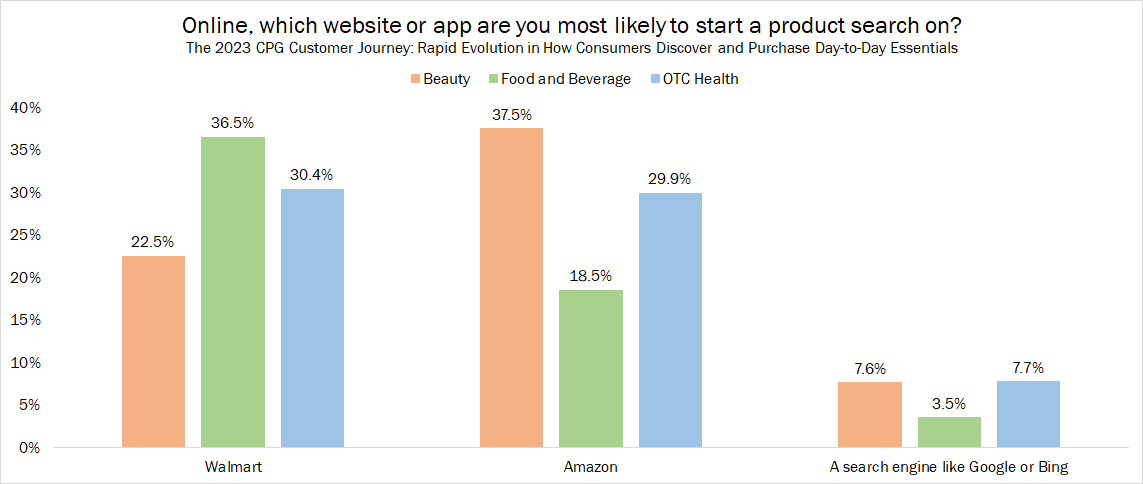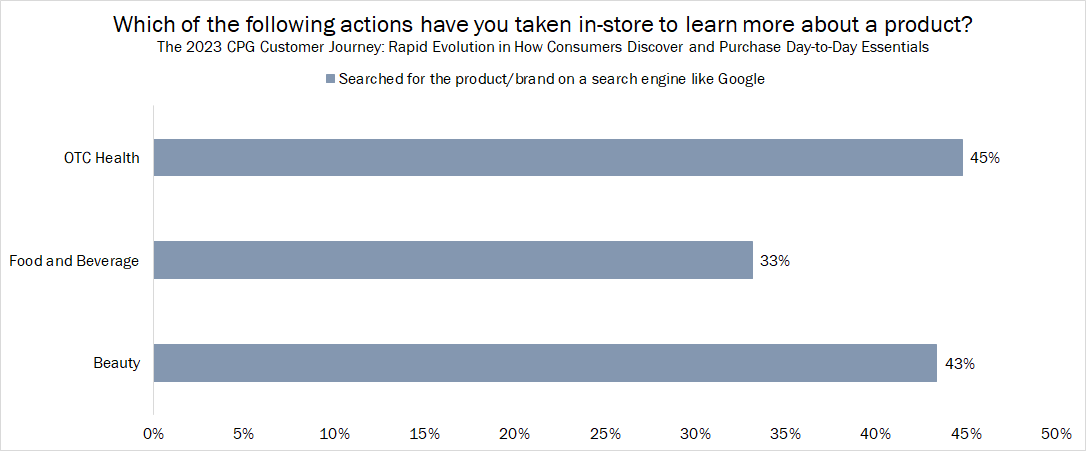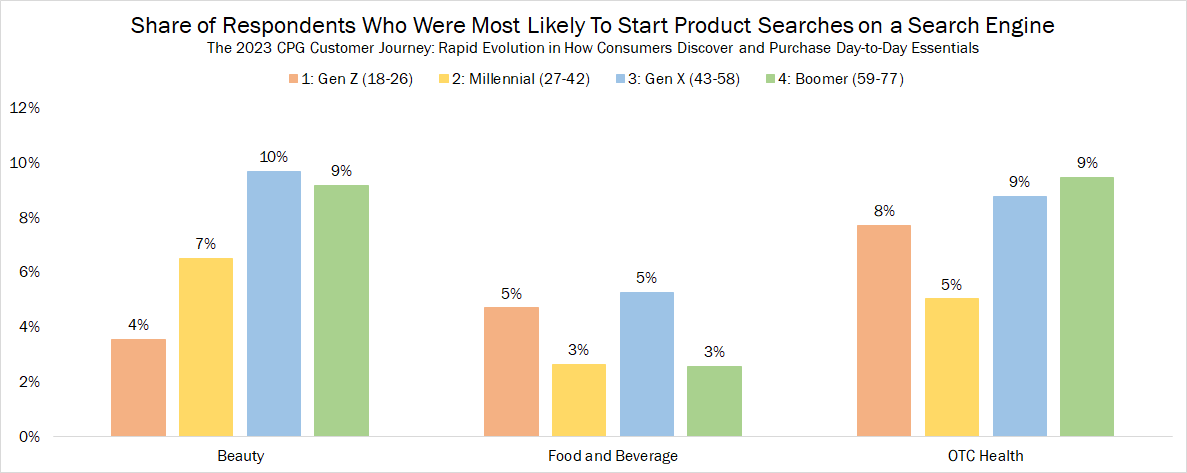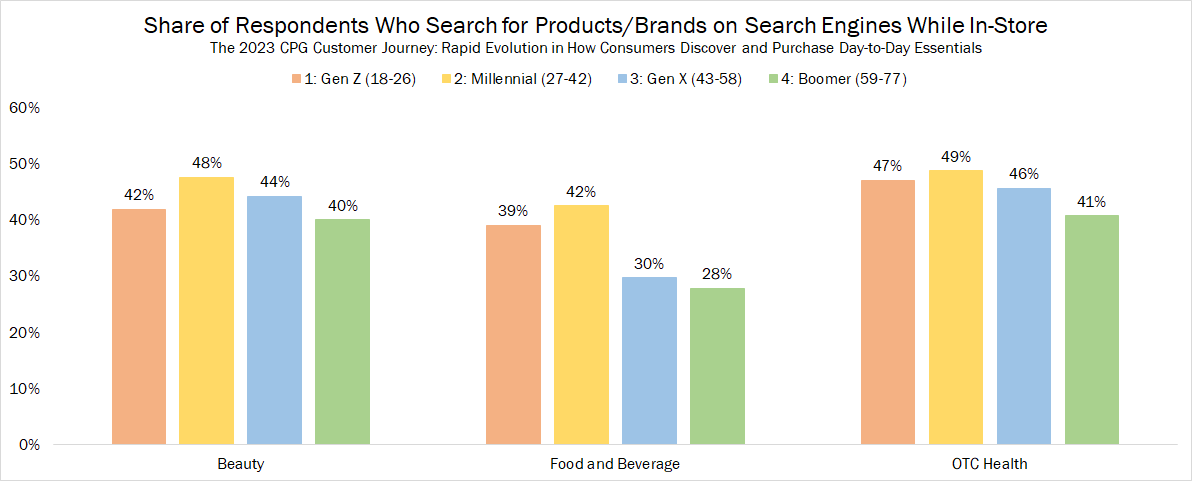The Vital Role of Traditional Search Engines to In-store CPG Research

The CPG customer journey is now more nuanced than it’s ever been, with steady expansions in the ways shoppers can discover, research, and ultimately purchase day-to-day essentials. Part of that journey is tied to traditional search engines like Google and Bing, which play a significant role in the path to purchase for many consumers.
Tinuiti surveyed more than 3,000 US consumers across three unique surveys targeting shoppers in the beauty, food and beverage, and over-the-counter (OTC) health product categories to develop deep insights for the The 2023 CPG Customer Journey report. Here we’ll unpack what the results show us about how these shoppers are engaging with search engines for these purchases, and how that varies by generation.
Across the beauty, food and beverage, and OTC health categories, consumers were much more likely to choose a major retail website like Amazon or Walmart than a traditional search engine as the place they’d most likely start product searches on. This was particularly true of food and beverage shoppers, with fewer than 4% choosing a traditional search engine as their most likely starting point.

These results might lead you to believe that search isn’t all that important for CPG marketers, but that couldn’t be further from the truth. The real value of search in the CPG customer journey lies in its importance to in-store research.
In addition to where they were most likely to start product searches, respondents were also asked to select which actions they’d taken in-store to learn more about CPG products. Across all three product categories studied, the number one choice for researching CPG products in-store was to search for the product or brand on a search engine. This beat out other options like visiting the store website or searching on social media, and was significantly more common than searching for the product on a different retailers’ website, like Amazon or Walmart.

This is important because the respondents across all three surveys most commonly chose brick-and-mortar store locations when asked where they’d purchased CPG products in the past month. Grocery stores were the most popular location for food and beverage purchases, while big-box stores like Target or Walmart were most commonly chosen for beauty and OTC health products.
Search engines might not be the first place that CPG shoppers search for products online, but they are very commonly where consumers go to research products right before purchasing in-store.
Looking at how likely respondents were to use search engines for product search and in-store research, there were clear differences that emerged between age groups that varied by product category.
When it comes to beauty and OTC health products, older generations were more likely than younger generations to turn to traditional search engines for initial product searches online. For food and beverage products, however, the results were much closer together across generations.

However, younger generations were more likely to search for products or brands on search engines when researching products in-store across all three product categories. Notably, older generations were less likely to take any of the actions presented in the survey when researching products in-store, as younger shoppers appear much more likely to head online for additional information before making a brick-and-mortar purchase.

Search engines might not be the first place that CPG shoppers search for products online, but they are very commonly where consumers go to research products right before purchasing in-store. This is true across beauty, food and beverage, and OTC health shoppers. Even large shares of older generations, who are less likely to do in-store research in general, turn to sites like Google to answer questions about their purchases in-store.
Particularly in the case of CPG products, the potential to influence in-store purchases is hugely valuable. Brands should make sure they’re not overlooking the important role search engines play in the customer journey when assessing the impact of this key channel.
